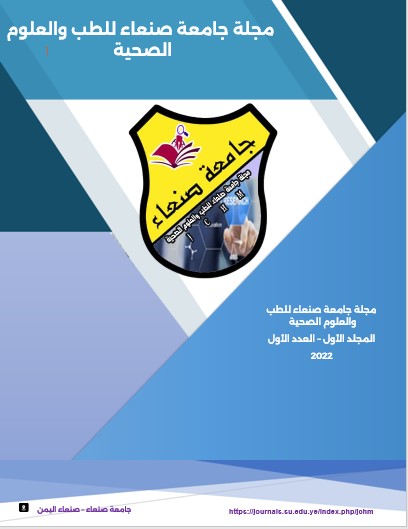Angiographic Characteristics of Young Yemeni Patients Undergoing Diagnostic Coronary Angiography: Data from A Major Cardiac Center In Yemen
محتوى المقالة الرئيسي
الملخص
Background: Coronary artery disease (CAD) accounts for the greatest proportion of CVDs and is one of the most common causes of death in the developed countries. It is one of the main etiologies of disease burden in developing countries. There is increase in the number of patients with coronary artery disease in Yemen. The number of patients undergoing elective diagnostic coronary angiography is increasing among different age groups. This study was aimed to identify and compare the prevalence of the risk factors, clinical presentation, management, and angiographic characteristics of CAD between young patients (age ≤ 40 years) and older patients (age ≥ 40 years) presented with ischemic heart disease (IHD). Methods: A total of 555 patients were were enrolled between January 2013 and June 2013. Patient admitted in ward as one-day admission and discharged 6 hours after the procedure. Demographic data, clinical findings, and details of electrocardiographic and echocardiographic findings were recorded. The traditional cardiovascular risk factors (smoking, hypertension, Khat chewing, family history and diabetes mellitus, dyslipidemia) were noted. The patient included were patients with sable angina, post myocardial infarction and pre-operative coronary angiography before valve replacement. Results: The older group accounts for 90.3% while younger group accounts for 9.7% of the patients. The majority of patients in both groups were male (81.5% in the young and 74.5% in the older group). Most of the patients in the study were diagnosed as post MI angina. High incidence of diabetes and hypertension among the older group in comparison to the younger group (24.4% diabetes and 43.1% hypertensive Vs. 11.1% diabetes and 29.6% hypertensive). 50% of the younger group were smokers in comparison to 23.8% in older group with statistically significant difference (p=0.0001). Family history of IHD was higher in the younger age group (24.1%) than that in the older age group (16%) (p = 0.129). Dyslipidemia was not common risk factor among both groups. The percentage of Khat chewing did not differ between the two groups (70.4% and 62.5% in younger and older group respectively). Significant left main disease was more than double in younger group (3.7%) when compared older group (1.9%). About one-third (31.5%) of patients of younger group had significant LAD lesion while small number of older patients had significant LAD lesion (1.6%) (p = 0.037). The involvement of right coronary artery (RCA) was significantly higher in older group than in younger group (27.7% and 7.5% respectively; with p = 0.001). Although the incidence of left circumflex artery (LCX) disease was higher in older group (28.8% and 16.7% respectively) it did not reach statistical significance. The left anterior descending artery (LAD) was commonly involved vessel in the young group (31.5%) in comparison to older group (1.6%) while left circumflex artery and right coronary artery was common in in the older group. Conclusion: Coronary angiography is a useful diagnostic and therapeutic tool for CAD. Smoking, male gender as well as family history of cardiovascular diseases showed high prevalence in the in younger patients ≤ 40 years, while hypertension and diabetes were common in the older patients. Khat chewing was highly prevalent among both groups.

